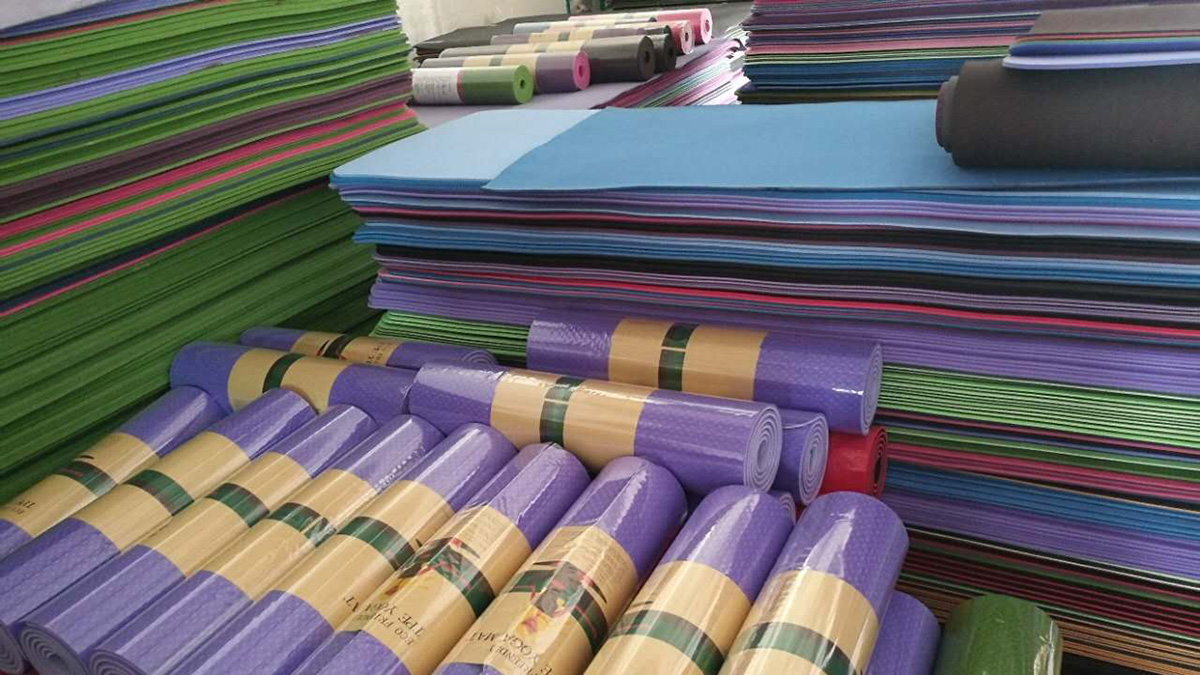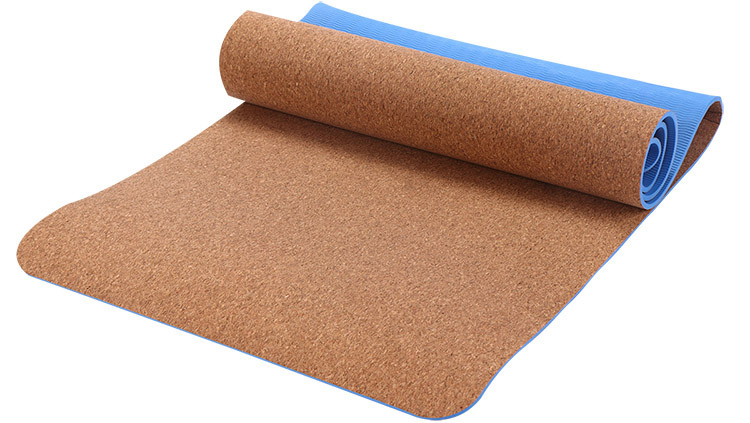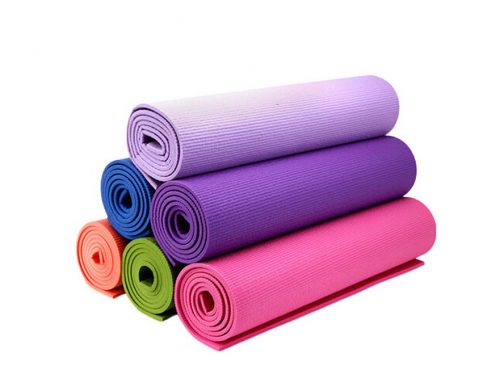Table of Contents
What is an Eco-friendly yoga mat?
Some of us may wonder what are those yoga mats made from before we consider buying a yoga mat. We have very good reason to know what materials the yoga mat contains because the yoga mat is not only important for our exercise but also a safety tool for our skin and health.
Yoga mats are made from a variety of materials but it’s worth noticing that not all of them are recyclable, biodegradable and with high quality. Some yoga mats are made with environmentally destructive plastics that would pollute water supply, the air quality, and even enter the food chain. Besides they may release harmful chemicals and smell which exert a negative effect on our health. As more people become environmentally conscious, they start refusing to buy products that pollute the environment.
The Eco-friendly yoga mats, also known as natural yoga mats, are usually made from jute, cotton, cork and natural rubber which are more environment-friendly and green compared with those traditionally made from Polyvinyl Chloride (PVC). They don’t have a toxic smell and they work even better in sweat-resistance and skid-resistance.
Speck has been working in the sector of fitness equipment for decades and have always maintained a campaign of products made in an environmentally friendly approach, and Speck is also one of the pioneers of producing Eco-friendly yoga mats.
What are the benefits of Eco-friendly yoga mats?
As we mentioned above, Eco-friendly yoga mats are made with materials that are not only green but also cause no harm to our health. These yoga mats are reusable, biodegradable, durable and long-lasting, which helps reduce our carbon footprint and do our fair share to mitigate the increasingly severe climate change. Eco-friendly yoga mats are often produced with higher quality and offer us better experience.
What materials are used for manufacturing Eco-friendly yoga mats?
Besides synthetic mats, there are also more and more mats made from natural textiles emerging in the market. You can find Eco-friendly yoga mats made from sustainable materials like cork, natural rubber, jute, cotton, hemp, and even grasses. Among them, cotton is more soft but less sustainable to grow compared with hemp and jute.
What are the pros and cons of Eco-friendly yoga mats?
Eco-friendly yoga mats are beneficial to our health and the environment in many ways but they also have some shortcomings, here comes some pros and cons of them.
Pros of cork mats
Cork is quite a new material that has been applied to yoga mats. It’s absolutely natural and biodegradable because the cork is based on tree bark and it does no harm to the trees during garnering process. Cork is also a renewable resource.
Cork mats are relatively easy to clean.
Cork mats have a good grip and balance thanks to the texture of the bark.
Cork mats can take moisture away from the body easily.
Cork mats help mix the toughness and softness perfectly, which gives them the ideal cushion.
Cork mats are very breathable that makes it easier to absorb and dissipate body heat, which is very friendly to your skin.
Cons of cork mats
Compared with synthetic yoga mats cork mats needs much more care. And we can hear some complaints that cork mats cracks when rolled up for a long time. In addition, cork mats are not every flexible so they are less cushiony. For those who have a limited budget, cork mats may be more expensive than those synthetic ones. However, if you are considering buying a less smelly, Eco-friendly yoga mat, this might be the ideal choice for you.
Pros of natural rubber yoga mat
Natural rubber is arguably the most ideal material for Eco-friendly yoga mats because it’s renewable and biodegradable, and it has been used widely in the market for a very long time. The rubber applied on those yoga mats are usually derived from nature and can be biodegradable easily. Some customers may find it comfortable because the natural rubber yoga mats have a harder surface.
The rubber mats are quite hard, heavy, flexible and have a very firm grip, which offers a better cushion. The natural rubber mats are durable and that will make you feel your money’s worth.
Cons of natural rubber yoga mats
As with all Eco-friendly yoga mats, natural rubber yoga mats are also costly.
Natural rubber may produce a noticeable smell at first but it will be mitigated over time and it causes no harm to our health.
Natural rubber mats can be pretty thick and heavy, which may put extra weight on those who carry them to the gym. This, though, cannot be regarded as a total drawback because not all people will find it to be negative.
As a vegetable fiber, jute has been very popular with yoga lovers throughout history. People have been using jute to weave curtains, wall paper, fishing nets, rugs and carpets. But it is usually blended with some polymer environmental resin when we use it for yoga mats.
Pros of jute mats
Jute is naturally biodegradable and its plantation requires minimum pesticides, which leaves just limited effects on the soil and carbon footprint it produces.
Its rough texture will perhaps give its customers the best grip and balance when they do yoga poses.
Both jute and natural rubber are durable materials that can endure long-term wear and tear.
Jute yoga mats are weather-resistant so you don’t need to worry about exposing them to sunlight and moisture. Their quality will not be damaged easily.
Jute mats are very light, allowing you to carry it with you everywhere you go.
Cons of jute mats
Although its blended property adds some cushioning, it’s not cushiony enough compared with natural rubber and PVC.
Jute has low chemical resistance.
Being a natural fiber, jute is poorly performed in heat-resistance and flexibility.
What are the factors you should consider for choosing the best Eco-friendly yoga mat manufacturer?
I. Scale
The main advantage of mass production is not difficult to notice, because over time the improvement of automation will drive manufacturers to produce similar products at scale and ultimately help the company achieve economies of scale. With mass production of Eco-friendly yoga mats, the manufacturer can reduce its cost per unit, leading to a win-win situation. Not only can consumers buy Eco-friendly yoga mats in bulk with lower prices, but firms can increase their profits.
II. Diversity
2.1 A wide range of Eco-friendly yoga mats helps contribute to attracting customers with different needs, for example, some can have more options if they are allergic to Eco-friendly yoga mats made from natural rubber.
2.2 The materials and properties of different Eco-friendly yoga mats vary greatly, which means they can complement each other and helps diversify customer groups.
2.3 Lengthening the manufacturing chain brings more added-value to their Eco-friendly yoga mats, which helps them gain market shares even further compared with their counterparts.
III. Research and Development capability
3.1 It helps manufacturers occupy the production of Eco-friendly yoga mats preemptively by attaching great importance to scientific and technological innovation.
3.2 In addition, it gives companies more confidence in their technology, helps offer more green and high-quality yoga mats as well as mitigates the technological barriers while competing with their international counterparts.
3.3 The research and development of Eco-friendly yoga mats requires the concerted efforts of talents, and it can result in forming a virtuous circle by promoting their development and flow.
Ⅳ. Quality control
4.1 Quality control plays a significant role in providing goods and services that satisfy customers and helps cut down wasted effort and save budget.
4.1 To ensure the quality of the Eco-friendly yoga mats allows the manufacturer to satisfy its consumers and meet the quality requirements mandated by the international laws and regulations such as applicability, reliability, safety.
4.2 It acts as a positive factor in implementing the ISO9001 standard that removes technical barriers and eliminates trade barriers.
V. International marketing
Manufacturers need to comply with the local costumes and cultures while operating in foreign countries. The rich international marketing experience will undoubtedly benefits a company and it also indicates its respect to foreign customers. All this will help elevate the inclusiveness of the corporate culture and expand its business even further.
VI. After- sale service
6.1 A good after-sale service is key to improving customer satisfaction, and they will later introduce the Eco-friendly yoga mats to their friends which forms an intangible marketing approach.
6.2 It will greatly increase the repeat purchasing. Our customers will likely to purchase again once they recognize the timely after-sale service.
6.3 Excellent after-sale service leads to the establishment of brand reputation and the elevation of brand influence. After-sales service serves as a tool which improve and refresh the brand image, continuously wining customers’ trust and dependence.
Why choose speck group?
Speck has long been producing goods automatically, including Eco-friendly yoga mats and offering the sale of eco-friendly yoga mats in bulk to our customers from many countries. As a pioneer of Eco-friendly yoga mat manufacturer, Speck also offers a variety of yoga mats made from different materials to meet the demands of our customers. Thanks to our rich experience in international marketing, our Eco-friendly yoga mats have been widely praised by our foreign business partners. In addition, Speck not only provides pre-sales consultation on environmentally friendly yoga mats, but also makes customers satisfied after-sales. These have contributed to helping us earn a good reputation as well as a large number of customers. So please feel free to contact us if you need any bulk Eco-friendly yoga mats.







